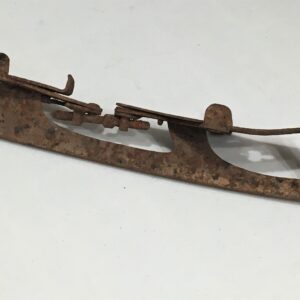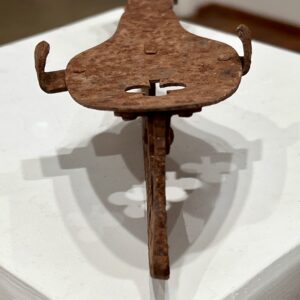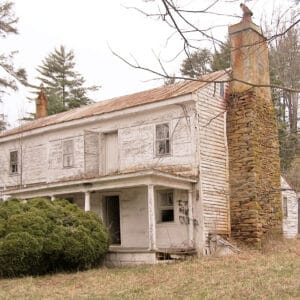View Collections | Browse Cultural Objects | Browse Oral History

Images (click to enlarge)
-

-

-

-
 Phlegar House is associated with German settlement around 1800 in what would become Floyd County. George Phlegar probably built the original log portion of the two-story weatherboarded house in about 1816, as indicated by a date stone at the top of the east chimney. Originally constructed as a two-story, hall-parlor-plan, log dwelling, the Phlegar House received Greek Revival improvements in the mid-19th century, followed by a frame addition constructed shortly after 1900. The house and surrounding farmland remained in Phlegar family possession until 1993, when the farm was acquired for development as the Floyd Regional Commerce Center. Source of photo and caption: Virginia Department of Historic Resources
Phlegar House is associated with German settlement around 1800 in what would become Floyd County. George Phlegar probably built the original log portion of the two-story weatherboarded house in about 1816, as indicated by a date stone at the top of the east chimney. Originally constructed as a two-story, hall-parlor-plan, log dwelling, the Phlegar House received Greek Revival improvements in the mid-19th century, followed by a frame addition constructed shortly after 1900. The house and surrounding farmland remained in Phlegar family possession until 1993, when the farm was acquired for development as the Floyd Regional Commerce Center. Source of photo and caption: Virginia Department of Historic Resources
County Life, Cultural Objects
Clip-On Ice Skate
People
Associated Person: George PhlegarProvenance: John Phlegar
Date
UnknownPlaces
Floyd (Courthouse District)Material/Medium
Steel
Specifications
- Length of blade: 11 inches
- Width: 3 1/4 inches
- Height: 2 1/4 inches
Description
This skate has separate toe and heel plates with a screw underneath to adjust the length of the skate. Clips on the sides of the toe plate and the back of the heel plate attach the skate to the skater’s regular leather shoe. There is also a tab placed so that it catches the front of a shoe heel. The toe plate has a clover leaf cutout. The blade has a center groove.
Manufactured by the Union Hardware Company of Torrington, Connecticut, probably in the early 20th century.
Acquired at the Phlegar Estate auction in Floyd, Virginia around the year 2000.
Keywords
clip-on ice skate, ice skating, Union Hardware CompanyNotes
This single skate was found in a box of shoemaking tools purchased at the estate sale for Sarah Amanda Phlegar. In the early 1800s, her great-grandfather George Phlegar (1762-1839) had dammed up Oldfield Creek to supply water for his grist mill. The Phlegar mill pond became a community recreation center and most likely was where the skate’s original owner practiced figure-eights.
According to Margaret Welch’s pamphlet, “The Shepherd of Floyd,” Rev. John Kellogg Harris took his Oxford Academy students ice skating on the mill pond, where the students found it “hard to match” Rev. Harris in “playing ‘shinny’ or cutting intricate figures on the ice as to trip him in Virgil or mathematics.”
Union Hardware Company of Torrington, Connecticut, began manufacturing ice skates in 1864. The cloverleaf cutout in the toe plate was their signature. The company eventually produced a variety of tools and sporting goods including fishing rods and golf club shafts.
Recollections of ice skating and ice harvest are found in several 2002 Little River place-based oral history interviews:
“People have told stories, you know, in the old days they would say the river would freeze over every winter, you know, solid. And people used to ice skate up and down the river to visit each other, back in the time when there were more people that had carriages, horses, and wagons, and not cars.
Across the river the neighbors used to have an ice house, and all the neighbors would get together in the wintertime, and they’d collect big blocks of ice. And it was built right down across the way here, and they would share the ice in the neighborhood, . . . but a neighborhood was quite a distance from what we’d consider neighborhoods today. And then in July, whatever was left, they would make ice cream.” Silvie Granatelli, 2002, Little River, Place-based Interview Series

